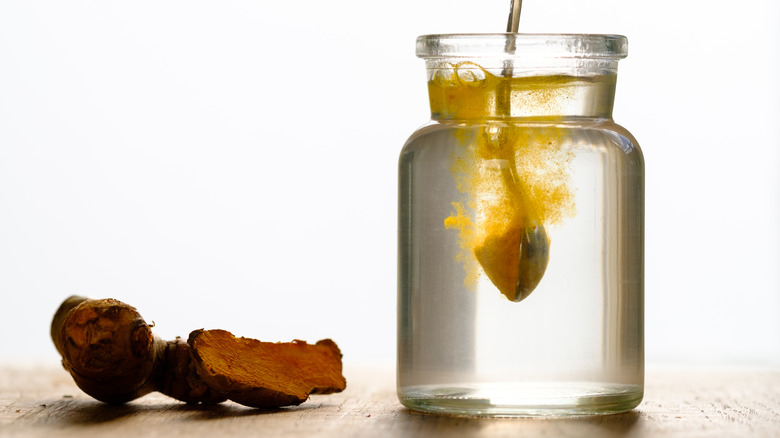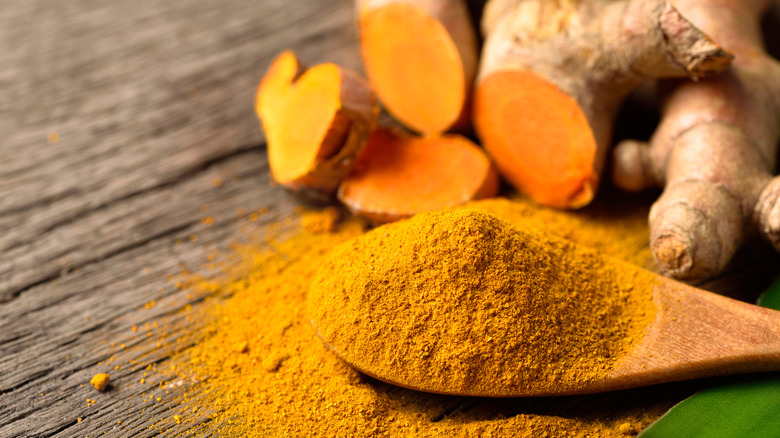The Water Test To Determine If Your Turmeric Is Pure
Once relegated to curries here in the U.S., turmeric (fresh and dried) is now booming. The Southeast Asian spice from the Curcuma longa plant has appeared in blogs, cookbooks, and medical websites worldwide; this cousin of ginger has online influencers singing its praises, not just for its unique flavor profile or the vibrant yellow patina it lends to every dish, but also for its health benefits. (Remember the "Golden Milk" craze?)
Used in Ayurvedic medicine for thousands of years for everything from inflammation to arthritis, turmeric contains a pigment called curcumin. Found within its rhizome (rooty structure), curcumin dissolves in fat and is what gives turmeric its distinctive deeply yellowed color, along with all those health benefits. It's also one of the leading reasons for its dangerous adulteration with toxic contaminants.
So, where are those contaminants coming from? For one, the soil it's grown in. In places like India, (where most turmeric is sourced), the ground has been so severely contaminated with lead, it's classified as a public health crisis (via Pure Earth). But there's also intentional adulteration with chalk or starches, according to Vasant Masala. These fillers increase the amount unscrupulous purveyors can sell and because these pale imposters can be easily identified, they're then treated with synthetic dyes (Sudan I, Sudan II, Metanil Yellow, and Orange II) and metal/mineral chromates like lead to boost the color.
So, how can you tell if turmeric is pure? Turns out, it's as simple as a glass of water.
How to perform the water test
While a myriad of tests can be done to determine the purity and safety of turmeric (most of which require chemicals to complete) the easiest and most effective to do at home is the water test. You'll just have to be willing to sacrifice a little of this yellow ochre-hued spice to the water gods.
Fill a glass with room-temperature water and add 1 teaspoon of turmeric on top of the water in the glass, taking care not to stir the spice. Let it sit for 15 to 30 minutes. If the turmeric has settled to the bottom of the glass, with no change in color, leaving the water clear or only lightly tinted, your turmeric is pure. If your water is cloudy, opaque, darkly yellow, or has little to no turmeric on the bottom of the glass, you can assume there's been some adulteration and that it should not be ingested.
Armed with this simple test, you'll be able to protect yourself and your family from contaminants like lead and choose turmeric purveyors who prioritize purity. Now, go enjoy your golden milk!

